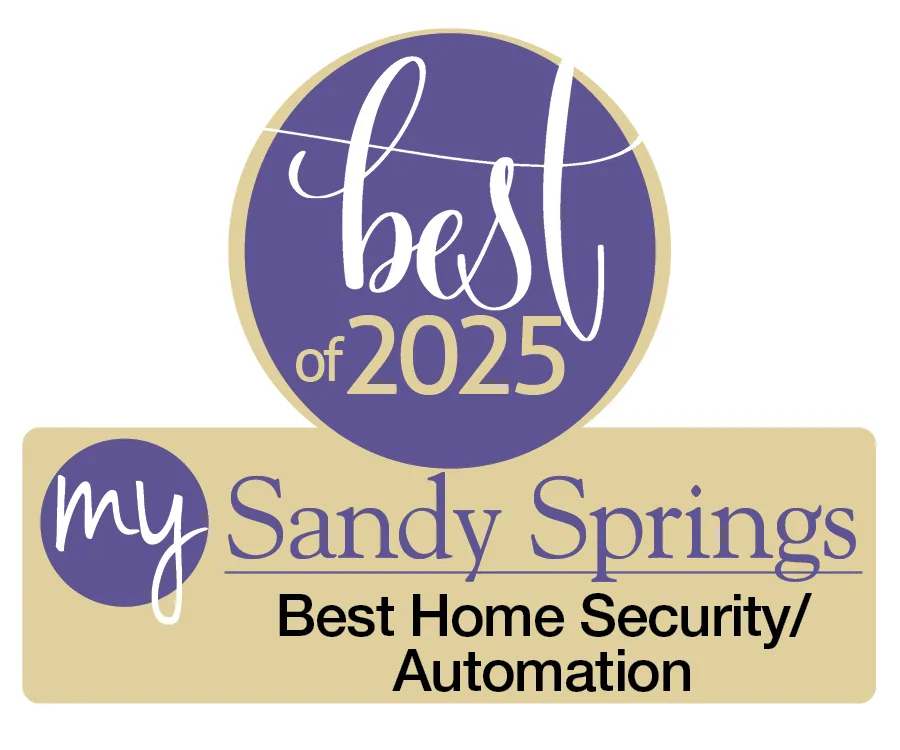Alarm.com stands as the unequivocal leader in the realm of security cameras, setting an industry standard that others strive to match. Renowned for their innovation and commitment to providing cutting-edge solutions, Alarm.com cameras transcend mere surveillance devices. Their integration with smart home security systems offers unparalleled features and functionalities, ensuring comprehensive protection and peace of mind for homeowners. From crystal-clear HD resolution to tailored video alerts based on nuanced home activities, Alarm.com’s cameras go beyond conventional offerings. With a diverse range of camera options, professional support, and cloud-based updates ensuring continuous enhancement, Alarm.com solidifies its position as the foremost choice for those seeking top-tier security solutions.
Types of Home Security Camera Systems
Selecting the ideal home security camera system involves navigating a diverse landscape of technologies, each offering unique advantages and limitations. From NVR, DVR, and SVR setups to IP and analog cameras, the spectrum of choices can be overwhelming. This comprehensive guide aims to unravel the intricacies of these systems by outlining their respective strengths and weaknesses. By delving into the pros and cons of each type, homeowners can gain invaluable insights to make informed decisions, ensuring that their chosen system aligns seamlessly with their security requirements and preferences.
NVR vs DVR vs SVR Systems
DVR System Components: Benefits, Drawbacks, and Differences
Analog Cameras: Analog security cameras, also referred to as CCTV cameras, are usually used with DVR systems. The camera is the main factor behind DVR security systems’ generally lower cost when compared to NVR systems. The recorder receives analog signals from analog cameras and processes the video data. Most DVR cameras are less expensive and sophisticated than NVR systems.
Coaxial Cables: A coaxial cable, which has a maximum length of 500 meters but may have certain restrictions, is used to link the analog camera and DVR.
In contrast to PoE cables, coaxial cables don’t power the camera. This indicates that two different kinds of cables—one for power and the other for sending video—are required.
Because coaxial cables are tougher and wider than Ethernet wires, installation may be difficult.
Since audio cannot be sent over ordinary coaxial connections, audio is a constraint.
AD Encoder: To convert unprocessed video input from the camera into watchable footage, DVR recorders rely on AD encoders. Consequently, each camera within a DVR system must be linked to both the recorder and an independent power supply.
Audio Limitations: An additional RCA connector is needed to support audio transmissions, which standard coaxial cables are not designed to convey. Additionally, the number of cameras that may record sound is limited by the fixed number of audio input ports on DVR recorders.
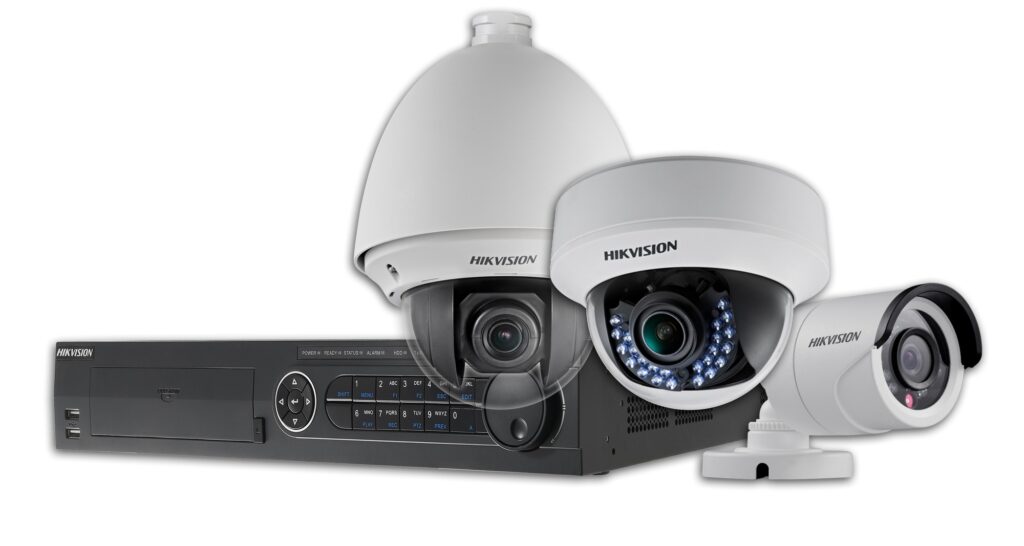
NVR System Components: Benefits, Drawbacks, and Differences
IP Cameras: Video data is processed by IP cameras before being sent to the recorder, which is how NVR systems use them. In addition to being more durable, IP cameras can record and send audio in addition to pictures. IP cameras with sophisticated hardware enable advanced video analytics such as facial and license plate recognition.
Ethernet Cables: IP cameras usually use Ethernet cables to connect to the recorder if they aren’t wireless. Although their maximum length is 100 meters, they are superior to coaxial cables in many ways.
A Power over Ethernet (PoE) connection may be included with some camera solutions, allowing power, video, and audio to be supported by just one cable. Splitters, which are frequently found in DVR systems, are no longer necessary as a result. Not all Ethernet-connected cameras, it should be noted, are PoE-capable; many IP cameras still need an Ethernet connection in addition to a separate power source.
Compared to coaxial cables, they are typically more affordable, easier to install, and more widely available.
Recorder: The video is only stored and viewed on the NVR recorder. Video data is processed at the camera before being delivered to the recorder; this is not done by it.
Audio Support: A camera equipped with a microphone on an NVR system can record audio to the NVR since Ethernet cables have the innate ability to send audio.
Greater Storage Capacity: One benefit of having an internet connection is that NVR camera systems may upload video to cloud-based servers. They can support a bigger capacity than DVR systems because they aren’t restricted to on-premise storage like DVR systems are.
When it comes to safeguarding your home, investing in connected security cameras is a strategic move. These cameras not only act as a deterrent to potential intruders but also offer unparalleled convenience and monitoring capabilities. However, not all connected video cameras are created equal. Alarm.com’s lineup of smart security cameras emerges as a superior choice, seamlessly integrating with a smart home security system to provide advanced features and intelligence.
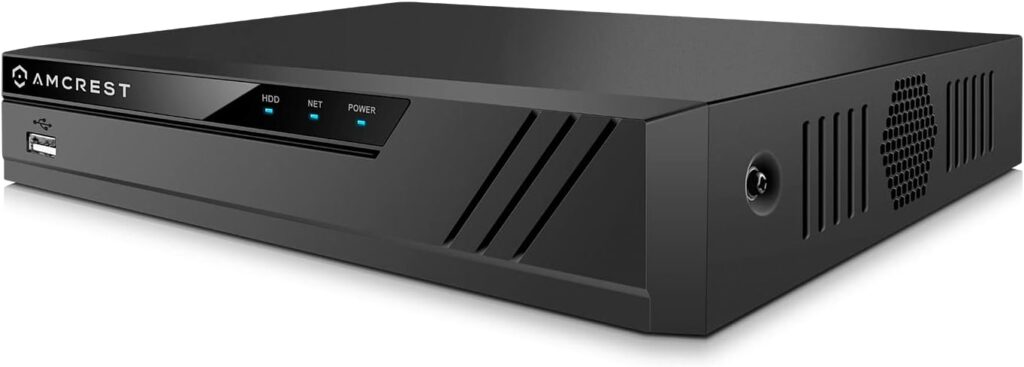
SVR (Standard Video Recorders) Systems: Benefits, Drawbacks, And Differences
Standard Video Recorders, often referred to as SVRs, are commonly utilized with analog security cameras, also known as CCTV cameras. SVR systems typically have a lower cost compared to more advanced NVR systems, primarily due to the use of analog cameras. These systems receive analog signals from the cameras and process the video data accordingly. SVR cameras, while less sophisticated, serve as a cost-effective solution for surveillance needs.
Cabling in SVR Systems:
In SVR setups, coaxial cables are employed to link analog cameras with the SVR. These coaxial cables have a maximum length of around 500 meters but may have limitations, making it necessary to adhere to specific distance guidelines. Unlike Power over Ethernet (PoE) cables, coaxial cables do not power the cameras. Consequently, two separate types of cables are required for transmitting video and supplying power, which can complicate the installation process. Furthermore, coaxial cables are bulkier and sturdier than Ethernet wires, potentially increasing installation difficulties.
AD Encoder and Audio Constraints:
SVR systems rely on AD encoders to convert raw video inputs from cameras into viewable footage. Each camera within an SVR system needs to be connected to both the recorder and an independent power supply. Audio transmission poses a constraint within SVR setups as coaxial cables are not designed to convey audio. Additional RCA connectors are necessary to support audio transmission, and the number of cameras capable of recording audio is limited by the fixed number of audio input ports on SVR recorders.

Analog vs IP Cameras
Video Quality and Resolution:
The most crucial factor to take into account when comparing an IP camera to an analog camera is image or picture quality. HD IP NVR vs. DVR analog: the acronyms and words may get very complicated. In the case of a security breach, a security camera must produce high-quality photos for examination and possible evidence.
So how do IP cameras and analog cameras actually compare?
High-definition (HD) analog camera technology is developing, with resolutions of up to 4 or 5 megapixels already possible. That is, however, the upper end of the range. Standard analog cameras often have a lower resolution than their digital counterparts, so keep that in mind when deciding between analog and IP cameras if image quality is important to your company. IP network cameras are able to capture video footage in higher definition than analog CCTV cameras. Additionally, compared to digital cameras, analog CCTV cameras are less effective in capturing or detecting motion.
When comparing IP cameras to analog cameras, one benefit is that the former offer greater resolution across the board, with models ranging from 1.3 to 5 megapixels. In addition to having better motion detection than analog cameras, IP video systems also have a greater frame rate. This is crucial for keeping an eye on places with a lot of movement or for situations requiring precise information, such facial recognition for analysis or intrusion detection.
Bandwidth And Image Quality:
The available bandwidth can also have an impact on motion detection and image quality. It’s crucial to compare the bandwidth needs of IP cameras and analog cameras while organizing the installation of a security camera system.
Compared to analog camera CCTV versions, IP cameras, like IP dome or bullet security cameras, provide higher-quality, higher-resolution images. But because the files are larger, it means more bandwidth and storage is needed. The bandwidth of the network needs to be adequate to deliver the best possible visual quality.
Coverage And Functionality:
It’s crucial to determine how many cameras are needed to offer thorough coverage when designing a video security system, especially for high-traffic or high-security locations. In this case, contrasting analog and digital solutions reveals significant variations.
An area may need to be covered by numerous cameras in analog camera security systems. While pan, tilt, and zoom capabilities are available for analog cameras, using them may result in a reduction in image quality.
Digitally zoomed IP cameras can capture the same areas from different angles without sacrificing image quality. Additionally, there are IP-based solutions that optimize coverage while lowering hardware and wire costs by housing several cameras in a single box.
Power And Connectivity:
An IP camera and an analog camera differ in how they are connected to an image recording device and a power source.
Separate cabling is needed for power and communication in analog cameras. Coaxial or twisted-pair cabling is utilized for communication and power supply in electrical security camera cables and connectors. Each function will need its own dedicated cable if the camera has pan, tilt, and zoom capabilities in addition to audio feeds.
For all of those purposes, IP cameras—like panoramic IP security cameras—need only one wire. To send images, they can establish a connection using coaxial cable or twisted-pair Ethernet to a LAN or WAN. They can also use PoE technology over twisted-pair Ethernet cabling to source power from the same network.
As long as there is a strong signal, images from both analog and IP cameras can be transmitted wirelessly.
Intelligent Monitoring And Integration:
While video security applications remain the primary reason why security professionals initially choose IP cameras over analog ones, camera networks are becoming more and more integrated with other applications as part of a “smart building” approach.
To reduce expenses and increase energy efficiency, camera networks, for instance, can be connected with environmental control or building management systems. Camera system data offers useful information on how occupied a building or space is, which can be utilized to automatically modify environmental controls like air conditioning, lighting, or heating in various areas.
IP cameras can be included into a more comprehensive smart system. They are compatible with other devices and may be readily integrated with other apps because they are constructed in accordance with open standards.
Transmission Distances And Security:
It is crucial to compare the maximum transmission distances of analog and IP cameras if the security monitoring crew is situated at a considerable distance from the region or building where the cameras are positioned.
The greatest transmission distances for analog cameras are roughly 1.5 kilometers for twisted-pair lines and 300 meters for coax cable.
Even though IP cameras can only transmit images over twisted-pair Ethernet across a shorter distance of about 100 meters, their ability to transmit data over the Internet removes this limitation.
This implies that any location with safe Internet connectivity can host monitoring stations. Additionally, it increases simplicity and flexibility by enabling security professionals to manage remote monitoring on mobile devices.
Data Storage And Scalability:
To reduce the chance of security breaches, it is imperative to secure data and images both in transit and on location. The security features that IP cameras and analog cameras offer are different.
Analog camera video feeds are not encrypted during transmission, which raises the possibility of security lapses in the event that the signals are intercepted. Theft of tangible components poses a danger of loss as well.
To optimize security, signals from IP cameras, such IP explosion-proof cameras, are encrypted at the source before being sent over the Internet or a virtual private network (VPN).
Analog
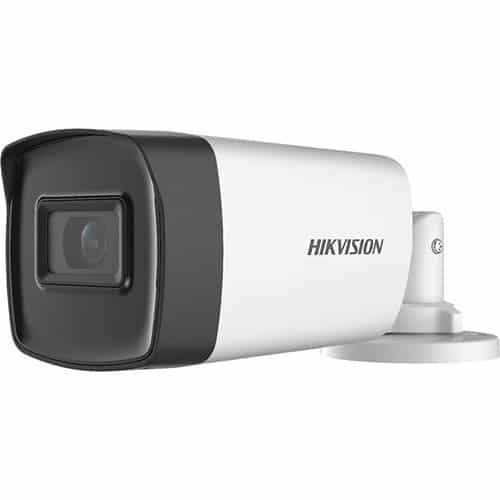
IP
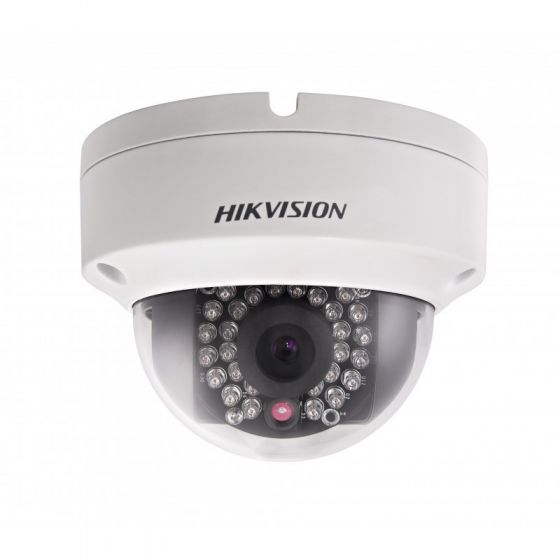
Through-Life Costs:
Consider all cost-related considerations when evaluating the through-life prices of analog vs. IP cameras.
Unit costs should only be taken into account when calculating through-life expenses, as they are dependent on the chosen camera model.
The cost of analog setup, installation, and system expansion is higher because to the wire needed for each individual camera.
By putting units with several cameras in a single unit, utilizing their zoom capabilities, or taking advantage of their wider fields of view than adding more analog cameras to cover the same area, IP cameras can provide coverage at a lesser cost than analog cameras.
Higher bandwidth requirements for IP cameras compared to analog counterparts are offset by cheaper networking and cabling expenses.
Maximizing Home Security with Alarm.com-Powered Cameras
Unparalleled Security Features
1. Enhanced Viewing Experience
Traditionally, accessing security camera footage was a reactive measure. With the Alarm.com app, proactive monitoring becomes effortlessly convenient. Our wireless indoor and outdoor cameras deliver crystal-clear HD resolution, with the latest models offering 1080p resolution for superior clarity. Zoom in effortlessly using your smartphone to closely observe any specific area in real-time, even in low-light conditions, thanks to our cameras’ infrared night vision capabilities.
2. Tailored Video Alerts
Unlike generic video cameras, Alarm.com understands your home’s dynamics, allowing you to customize video alerts based on specific events. Whether it’s detecting motion on your porch, confirming your kids’ safe arrival home from school, or activating during an alarm event, our system offers precise, tailored alerts for your peace of mind.
3. Effortless Clip Sharing
Sharing captured video clips has never been easier. Our user-friendly smartphone app enables hassle-free sharing via messages, emails, and social media platforms. Whether it’s aiding law enforcement in identifying intruders or simply sharing joyful family moments, Alarm.com simplifies the process.
4. Professional Support
Installation and maintenance are hassle-free with Alarm.com’s professional support. Our service providers handle everything, from optimal camera placement during installation to ongoing maintenance. With professionally configured cameras seamlessly integrated into your security system, rest assured knowing that expert assistance is readily available.
5. Versatile Camera Options
Alarm.com offers a diverse range of top-tier cameras suitable for every corner of your home. Our lineup includes the discreet 522 camera designed to blend seamlessly, the weather-resistant 722 camera ideal for outdoor use, and the innovative Wi-Fi doorbell camera, ensuring comprehensive coverage with specialized functionalities.
Why Choose Alarm.com-Powered Cameras?
Alarm.com’s commitment extends beyond providing superior equipment. Our cloud-based upgrades and feature enhancements ensure that your cameras remain cutting-edge without requiring constant replacements. This commitment translates to extended equipment lifespan and increased value for you.
Getting Started with Smarter Video Monitoring
Ready to elevate your home security? Alarm.com-powered video cameras are exclusively available through Alarm.com service providers. Take the first step towards a smarter, more secure home by connecting with a service provider today.
Conclusion
Investing in Alarm.com-powered cameras goes beyond mere surveillance; it’s a commitment to unmatched security, convenience, and reliability. With a seamless integration into your smart home security system and a range of advanced features, these cameras redefine the standard for home protection.
For those seeking superior security solutions, the choice is clear—Alarm.com delivers unparalleled peace of mind.
FAQs
Outdoor security demands robustness and weather resistance. IP cameras or weatherproof analog cameras linked to a DVR system are commonly recommended. IP cameras offer high-resolution footage and advanced features, while weatherproof analog cameras with a DVR provide a cost-effective solution.
Select NVR systems for higher resolution and scalability, ideal for larger spaces needing detailed monitoring. Opt for DVR systems when cost-effectiveness and compatibility with analog cameras are priorities.
Yes, most modern security camera systems, especially IP and NVR setups, offer remote access via dedicated apps or web interfaces. This allows homeowners to view live feeds or recorded footage from their cameras using smartphones or computers from anywhere with an internet connection.
Factors include camera placement for optimal coverage, ensuring a stable network connection for IP and NVR systems, and considering power supply accessibility, especially for wired setups. Additionally, understanding local regulations on camera usage is crucial.
Wireless systems offer flexibility in installation and can be easier to set up. However, they might be prone to signal interference or limited by Wi-Fi coverage. Wired setups generally offer more reliability but might require more effort during installation due to cabling requirements. Choosing between them depends on specific needs and the property’s layout.










